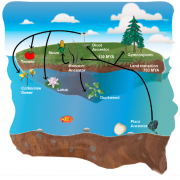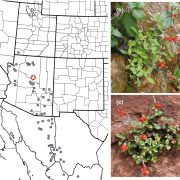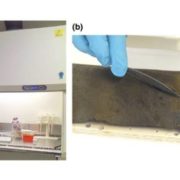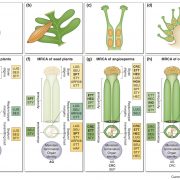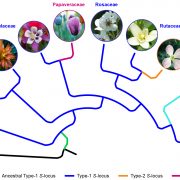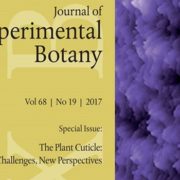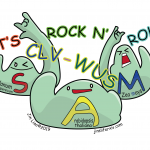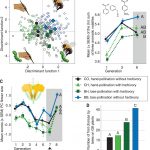Transposable elements drive rapid phenotypic variation in Capsella rubella (PNAS)
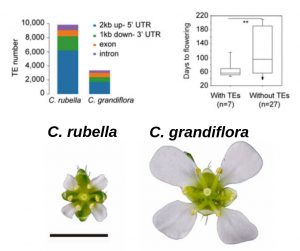 How can a species with limited genetic variation rapidly adapt to new environments? This phenomenon is known as the genetic paradox of invasion. Here, Niu et al. studied the role of Transposable Elements (TEs) in Capsella rubella, focusing on flowering-time variation. By analyzing population genomics and comparing with its outcrossing sister C. grandiflora, TEs were found “highly enriched and polymorphic in promoters and downstream regions of C. rubella genes”, mostly in intergenic regions. Sequencing revealed frequent TE insertions in the 3’UTR of Flowering Locus C (FLC), contributing to a decrease in FLC expression and early flowering. The authors postulated CrFLC expression decreases due to altered mRNA stability. 3’RACE and GUS-reporter assays showed alternative polyadenylation caused by the insertions, which leads to faster degradation of CrFLC and explained its decrease. This study suggests TE regulations are potential agents of rapid adaptive diversification, conferring phenotypic advantages in species affected by genetic bottlenecks. (Summary by Ana Valladares). Proc. Natl. Acad. Sci. USA 10.1073/pnas.1811498116
How can a species with limited genetic variation rapidly adapt to new environments? This phenomenon is known as the genetic paradox of invasion. Here, Niu et al. studied the role of Transposable Elements (TEs) in Capsella rubella, focusing on flowering-time variation. By analyzing population genomics and comparing with its outcrossing sister C. grandiflora, TEs were found “highly enriched and polymorphic in promoters and downstream regions of C. rubella genes”, mostly in intergenic regions. Sequencing revealed frequent TE insertions in the 3’UTR of Flowering Locus C (FLC), contributing to a decrease in FLC expression and early flowering. The authors postulated CrFLC expression decreases due to altered mRNA stability. 3’RACE and GUS-reporter assays showed alternative polyadenylation caused by the insertions, which leads to faster degradation of CrFLC and explained its decrease. This study suggests TE regulations are potential agents of rapid adaptive diversification, conferring phenotypic advantages in species affected by genetic bottlenecks. (Summary by Ana Valladares). Proc. Natl. Acad. Sci. USA 10.1073/pnas.1811498116


